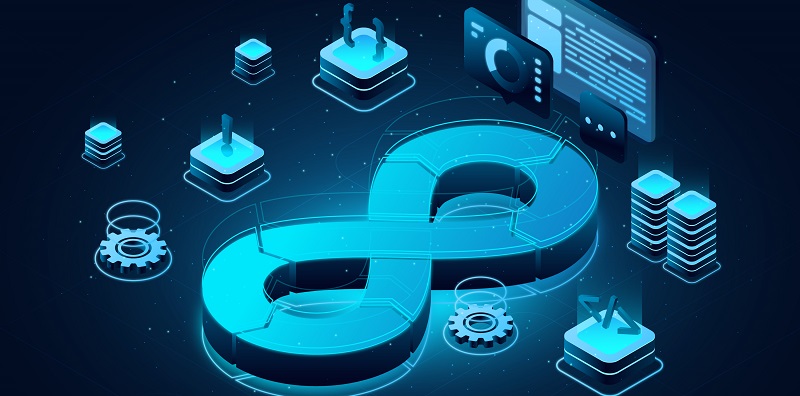In today’s fast-paced and interconnected world, organizations are constantly seeking ways to accelerate software development and deployment. DevOps, a collaborative approach that combines development and operations teams, has become a popular solution. However, in the pursuit of speed and efficiency, security is often overlooked, leading to vulnerabilities and breaches. This article will delve into the importance of integrating security into the DevOps strategy and provide a comprehensive guide to implementing DevSecOps practices.
DevSecOps: Integrating Security Throughout the Development Lifecycle
To achieve a secure development and deployment environment, organizations must embrace the concept of DevSecOps. Unlike traditional approaches where security is an afterthought, DevSecOps emphasizes integrating security early and continuously throughout the entire development lifecycle. By involving security experts from the beginning, organizations can identify potential vulnerabilities and implement appropriate measures to mitigate risks.
Key Security Technologies for DevOps
Utilizing DevOps technologies created with security in mind is vital to this strategy. These technologies not only streamline development processes but also embed security controls and best practices. By leveraging security technologies, developers can focus on building secure code while automated tools identify and mitigate vulnerabilities. Examples of such technologies include secure coding standards, static and dynamic application security testing (SAST and DAST) tools, container and serverless security platforms, and infrastructure-as-code frameworks.
Implementing automated security testing and vulnerability monitoring
One of the fundamental components of DevSecOps is automated security testing. Traditional manual testing methods are time-consuming and prone to human error. By automating security testing, organizations can ensure that security checks are consistently executed, leaving fewer chances for oversight. Additionally, real-time vulnerability monitoring tools provide continuous visibility into the security posture of applications and infrastructure, enabling prompt identification and response to potential threats. Compliance checks are also essential to ensure adherence to regulatory requirements and industry standards.
Fostering a culture of shared security responsibility
DevSecOps promotes collaboration between developers, operational workers, and security teams. This cooperative approach fosters a culture of shared security responsibility. Developers become more aware of the potential security risks associated with their code, while operational workers and security teams actively provide guidance and assistance. By breaking down silos, this cooperative culture strengthens security measures and instils a sense of ownership among all stakeholders.
Security from the Start
To ensure faster and safer software releases while meeting regulatory requirements, security considerations must be ingrained from the start of the DevOps process. By involving security experts in the initial planning and design phases, organizations can identify potential compliance issues early on and address them in a proactive manner. This approach reduces the risk of costly last-minute modifications and ensures that software is compliant and secure from the outset. Several case studies highlight successful implementations of security from the start, showcasing how organizations achieved regulatory compliance without compromising agility.
Shifting Security Left
Moving security checks earlier in the development process is referred to as “shifting security left.” Traditionally, security testing occurs towards the end of the development cycle, which increases the likelihood of identifying vulnerabilities late and disrupts the overall workflow. By bringing security checks closer to the beginning of the development process, organizations can identify and rectify security flaws early. This approach reduces rework and accelerates the delivery of secure software.
Automating Security Checks for Efficiency and Accuracy
Automation plays a crucial role in ensuring the efficiency and accuracy of security checks. By automating security testing, organizations reduce the dependency on manual processes and eliminate the chances of human error. Automated tools and scripts can perform various security checks such as vulnerability scanning, code analysis, and configuration checks at scale. Furthermore, automation guarantees consistent execution of security checks, enhancing the overall software quality and security.
Regular patching and updates for preventing exploits
Exploits often target outdated systems, libraries, and frameworks. Regular patching and updates are essential to protect against these vulnerabilities. DevSecOps advocates for automating the process of applying patches and updates to ensure that systems stay secure and up to date. Through continuous monitoring and automation, organizations can promptly identify and patch vulnerabilities, significantly reducing the risk of exploitation.
Secure Configuration Management for Infrastructure
Proper configuration management is critical for maintaining a secure infrastructure. DevSecOps encourages the use of configuration management solutions to automate the administration of security settings. By enforcing safe configurations throughout the entire infrastructure, organizations reduce the chances of misconfigurations that could lead to security breaches. Automation helps maintain consistency and allows for the rapid deployment of secure configurations across the infrastructure.
Integrating security into the DevOps process is not only essential but also achievable. DevSecOps provides a framework for incorporating security early and continuously throughout the development lifecycle. By leveraging DevOps technologies designed with security in mind, organizations can enhance their security posture while maintaining efficiency. Automation of security testing, vulnerability monitoring, and compliance checks adds a layer of robustness to the development process. Fostering a culture of shared security responsibility ensures that all stakeholders actively contribute to a secure environment. By considering security from the start and shifting security left, organizations can achieve faster and safer software releases while meeting regulatory requirements. With regular patching and updates, as well as secure configuration management, vulnerabilities and exploits can be mitigated. By adopting the practices outlined in this comprehensive guide, organizations can harness the power of DevSecOps to build and deploy software securely, protecting their assets and the privacy and trust of their customers.

